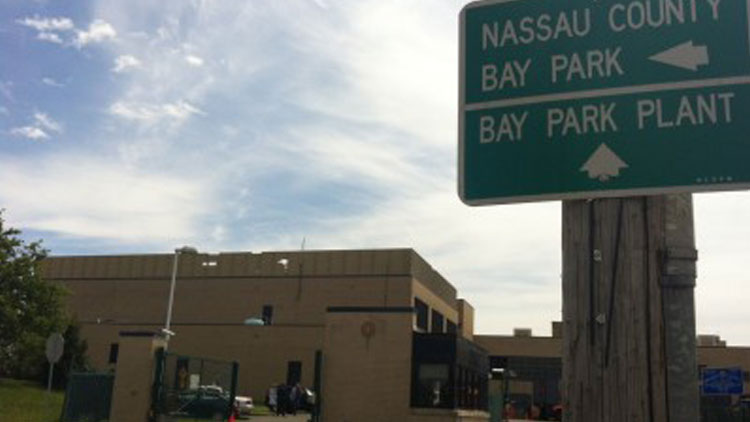Nitrogen pollution continues to threaten vulnerable marshlands that serve as natural buffers, causing losses of critical areas along the South Shore of Long Island and diminishing their ability to protect coastal communities, according to a study released by the New York State Department of Environmental Conservation Thursday.
The scientific white paper bolsters what environmentalists (and the Press) have been warning about for years. Salt marshes were once thought to have an unlimited capacity to remove excess nitrogen from the environment. But not any more. The negative effects of nitrogen pollution have garnered greater attention in recent years due to the marshland damage caused by powerful storms, most notably Superstorm Sandy.
“The report illustrates the noxious effect excess nitrogen pollution has on marshland systems that help to protect Long Island against storms like Sandy,” DEC Commissioner Joseph Martens said in a statement announcing the release of the study. “Based on this information, it is imperative that efforts to improve coastal storm resiliency include actions to significantly reduce nitrogen pollution.”
Scientists blame marsh loss on several factors: sea level rise, sediment alteration, wave action and coastal development. But the greatest source of nitrogen pollution came from wastewater, according to a previous study of the Great South Bay, which the report cites.
According to the report, 68 percent of the total nitrogen that entered the Great South Bay originated from wastewater emanating from septic systems and sewage discharged into the watershed.
The DEC’s report noted that increased nitrogen exposure causes marsh grass to become greener and grow taller, but the roots are weaker and smaller. Eventually, the marsh grass grows too tall and collapses, “exposing soils to erosive forces.”
“The destabilization of creek-edge and bay-edge marshes makes these areas much more susceptible to the constant tugging and pulling of waves, accelerating erosion and the ultimate loss of stabilizing vegetation,” the report stated.
It continues: “This process results in the loss of the naturally resilient coastal barrier marshes—a barrier that protects shoreline communities from major storm surges and wave action along coastal areas.”
Thus, according to the report, reducing the resiliency of our coastlines and making the Island more vulnerable to future storm surges.
The DEC highlighted three projects that could limit nitrogen concentration, though their combined price tag would likely soar into the billions: adding an ocean outfall pipe to Nassau County’s troubled Bay Park Sewage Treatment Plant, expanding the use of the Bergen Point wastewater treatment plant with a repaired outfall pipe, and extending sewers to cover densely populated areas of southern Suffolk County.
The federal government has already agreed to provide Nassau County with $810 million to repair Sandy-ravaged Bay Park plant, but state and local officials are still lobbying for an additional $600 to $700 million to build an outfall pipe that would extend from Reynolds Channel into the Atlantic Ocean.
Sandy’s storm surge overwhelmed the plant, contributing to near-crippling damage rendered by decades of mismanagement and neglect by county officials and causing a catastrophic failure that spewed sewage into local streets and homes, and spilled nearly 200 million gallons of treated and untreated sewage into Reynolds Channel and Hewlett Bay. The plant serves about half-a-million residents across the county.
The DEC’s release of its white paper comes just four days before local and state officials are expected to hold the first of three public meetings discussing ways to improve wastewater management in Nassau and Suffolk.
The first meeting will be held at the Nassau County Legislative Building on May 12; the second May 19 at SUNY Stony Brook; and the third on May 28 at a location that has yet to be determined.
Read the report:
Nitrogen Pollution and Adverse Impacts on Resilient Tidal Marshlands



























